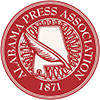As we continue the expansion of our collective “toolboxes” to include more and more digital products, the question that must be answered is what makes us different from all of the other companies and services selling similar products.
The American Marketing Association defines a “brand” as “a name, term, design, symbol or any other feature that identifies one seller’s good or service as distinct from those of other sellers.”
So how much is your brand worth?
In 2011, Interbrand ranked Coca-Cola the most valuable brand in the world, with a value of almost $72 billion. A year later, Milward Brown Optimor found another company’s brand even more valuable at $183 billion. If you guessed Apple, you’re correct.
When it comes to sports teams, the Yankees top the list at a value of $2.3 billion. (Technically, they come in at number 4, but the first three are professional soccer teams. This is Alabama. They don’t count.) The Cowboys, Patriots, Dodgers, Redskins and New York Giants round out the top nine. (That’s right, another one of those soccer teams is number 10.)
It’s fairly easy to put a value on most brands. But what about newspapers? There’s, no doubt, an intrinsic value to what a newspaper can, or does, bring to a community. It offers a unique opportunity to connect with the readers on a much more personal level than one can find through competing media. And despite what you may have heard, the power of the print product still carries considerable weight in communities big and small.
The New York Times did a story a few years ago about websites that publish police mugshots. These sites collect millions of photos from police departments across the country. They make their money by charging a fee to remove the photos.
Other online media outlets had done similar stories, but had failed to cause much of a stir in the way these sites conducted their business. When word leaked that The Times was preparing a story, the sites immediately ceased to appear on the first page of a Google search. The financial companies – major credit cards and Paypal that helped these sites profit from these schemes severed or restricted their involvement with the mugshot sites. All because the New York Times was investigating a story. That says a lot about not only the NYT brand, but about the power of the printed word.
Some make the mistake of “transforming” their brand to the point of abandoning it all together. Even among press associations, several have undergone name changes. Some more than once. What they’re left with is a brand that in no way clearly defines what they do or where their loyalties lie.
Remember years ago when the patent for Coca-Cola expired? They thought it would be a good time to change their formula to a “new” coke. So on April 23, 1985, Coca-Cola made the official announcement.
What resulted was a firestorm of consumer criticism. The consumer hotline began fielding more than 1500 calls a day, up from the 400 a day it had been receiving prior to the announcement. Angry letters poured in from all over the country. Roberto Goizueta, Coca-Cola’s chairman and CEO at the time, received a letter addressed to “Chief Dodo, The Coca-Cola Company.” (He often said he was more upset that it was actually delivered to him!) Another person wrote to him asking for his autograph — because, in years to come, the signature of “one of the dumbest executives in American business history” would be worth a fortune.
79 days after the original announcement, Coca-Cola executives unveiled the return of “Coca-Cola Classic.” That July day, the story that the original Coca-Cola was returning to store shelves as Coca-Cola Classic led two network newscasts and made the front page of virtually every major newspaper. Consumers applauded the decision. In just two days after the announcement, the company received 31,600 telephone calls on the hotline. Coca-Cola was obviously more than just a soft drink.
So, again, ask yourself…what makes your brand different? For us, I like to think our name represents relationships built over time. We have three people on staff who have collectively been with APA for more than 70 years. That’s a lot of time. And in that time, we’ve been fortunate to connect with our members in ways that other associations may not have been afforded. History proves that personal connection becomes a real difference maker for our clients. Whether it’s placing a press release or an ad schedule, or utilizing any of the countless services we offer here, we pride ourselves in delivering to our customers that one-on-one contact with you, our newspapers.
And that’s what makes the brand of our association, not only special and unique, but valuable in so many ways.

